Tariffs = No Shopping
- Deborah Kade
- Sep 4, 2025
- 6 min read
It was partly sunny when I awoke this morning. The clouds took on pink coloring.
What’s that old saying? Red skies at night, sailors delight. Red skies in morning, sailors take warning.
I wanted to go to Spiez today but when I checked the weather, it said rain would be starting in late afternoon. Spiez is too quaint a village to be photographed in the rain. Instead, I decided to go to Hergiswil, the home of Glasi.
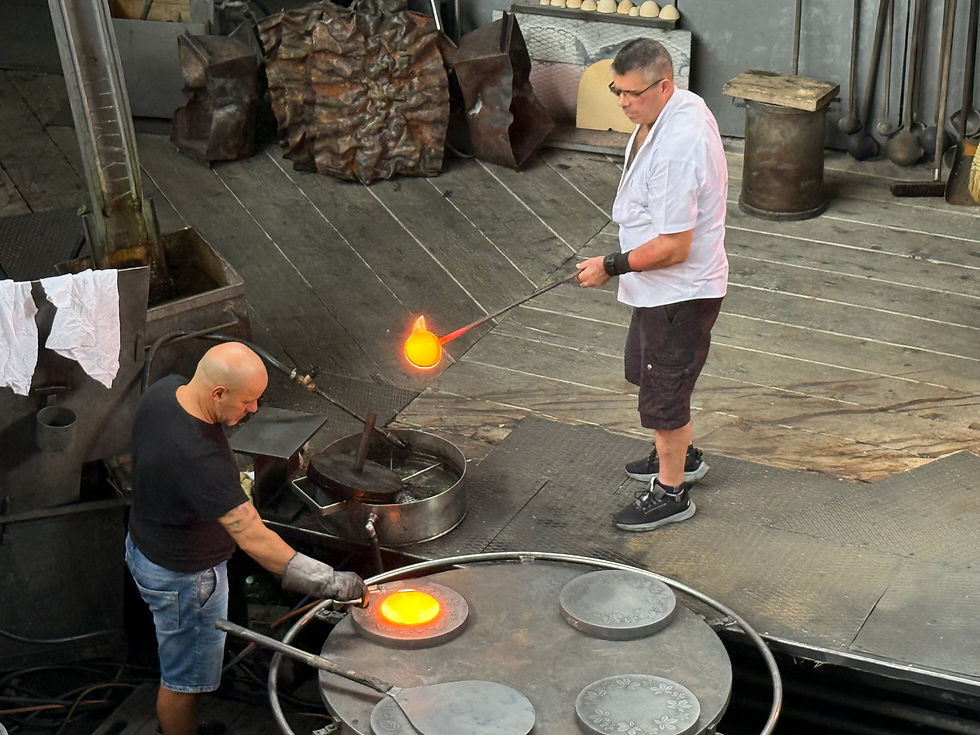
I will take the train from Interlaken Ost towards Luzern. Today I am on the panorama train that goes between Interlaken Ost to Luzern. What makes the difference between this train and others are the large glass viewing windows.
You get a wonderful view of Lake Brienz. This train always leaves on track 4 at the Interlaken Ost station.. It has been this way for years.

Guess this little one didn't want to look out the window. Just wanted to get a few zzzzzzz's!

Our first stop was in Brienz. They have a temporary WC and travel center. They are also working on the parking lot as it was washed out last year, too.
The mountain sides and the valleys below are in lush shades of green. Waterfalls cascade down the mountains.


Next stop is Meiringen which is famous for Sherlock Holmes Reichenbach Falls and the place where meringues were invented. The tasty baked dry treats are found everywhere in town. They can be served plain, with cream, with fruit, with ice cream or any combination.
Reichenbach Falls is a waterfall which drops at a height of 250 meters (820 ft. .At 110 meters (360 ft), the upper Grand Reichenbach Fall (German: Grosser Reichenbachfall) is one of the highest waterfalls in the Alps. The Reichenbach loses 290 meters (950 ft) of height from the top of the falls to the valley floor of the Haslital. A hydroelectric power company harnesses the flow of the Reichenbach Falls during certain times of year, reducing its flow.
In literature, Great Reichenbach Falls is the location of the final altercation between Sir Arthur Conan Doyle's hero Sherlock Holmes and his greatest foe, Professor Moriarty, in "The Final Problem".
"The town and the falls are known worldwide as the setting for a fictional event: it is the location where Sir Arthur Conan Doyle's hero, Sherlock Holmes, fights to the death with Professor Moriarty, at the end of "The Final Problem", first published in 1893. A memorial plate at the funicular station commemorates Holmes, and there is also a Sherlock Holmes museum in the nearby town of Meiringen."
"Out of many waterfalls in the Bernese Oberland, Reichenbach Falls seems to have made the greatest impression on Sir Arthur Conan Doyle, who was shown them on a Swiss holiday by his host Sir Henry Lunn, the founder of Lunn Poly. Sir Henry's grandson, Peter Lunn, recalled, "My grandfather said 'Push him over the Reichenbach Falls' and Conan Doyle hadn’t heard of them, so he showed them to him." So impressed was Doyle that he decided to let his hero die there."
"The actual ledge from which Moriarty fell is on the other side of the falls from the funicular; it is accessible by climbing the path to the top of the falls, crossing the bridge and following the trail down the hill. The ledge is marked by a plaque which states: "At this fearful place, Sherlock Holmes vanquished Professor Moriarty, on 4 May 1891." The pathway on which the duel between Sherlock Holmes and Professor Moriarty occurs ends some hundred meters away from the falls. When Doyle viewed the falls, the path ended very close to the falls, close enough to touch it, yet over the hundred years after his visit, the pathway has become unsafe and slowly eroded away, and the falls have receded further back into the gorge."
There are several types of meringue: the sweetened, beaten egg whites that form the "islands" of floating island (also known in French as île flottante); the partly cooked toppings of lemon meringue pie and other meringue-topped desserts; and the classic dry featherweight meringue. Different preparation techniques produce these results.
French meringue, or basic meringue, is the method best known to home cooks. Fine white sugar (caster sugar) is beaten into egg whites.
Italian meringue was invented by the French chef Lancelot de Casteau in 1604. It is made with boiling sugar syrup, instead of caster sugar. This creates a much more stable soft meringue which can be used in various pastries without collapsing. In an Italian meringue, a hot sugar syrup is whipped into softly whipped egg whites until stiff, and until the meringue becomes cool. It will not deflate for a long while and can be either used for decoration on pie, or spread on a sheet or baked Alaska base and baked.
Swiss meringue is whisked over a bain-marie to warm the egg whites, and then whisked steadily until it cools. This forms a dense, glossy marshmallow-like meringue. It is usually then baked.
Vegan meringue is imitation meringue made using aquafaba with a small amount of vinegar and caster sugar. It holds similar characteristics to that of egg-based meringue, but it will quickly burn if torched or baked incorrectly. Another variation uses potato protein instead of aquafaba.
The train pulls into the station but then reverses direction and turns up toward the steep mountains. It goes from small gauge tracks to cog wheel to deal with the steepness. You can hear the gears engage.
The train chugs up and up and up the mountain. The valley floor is far below.


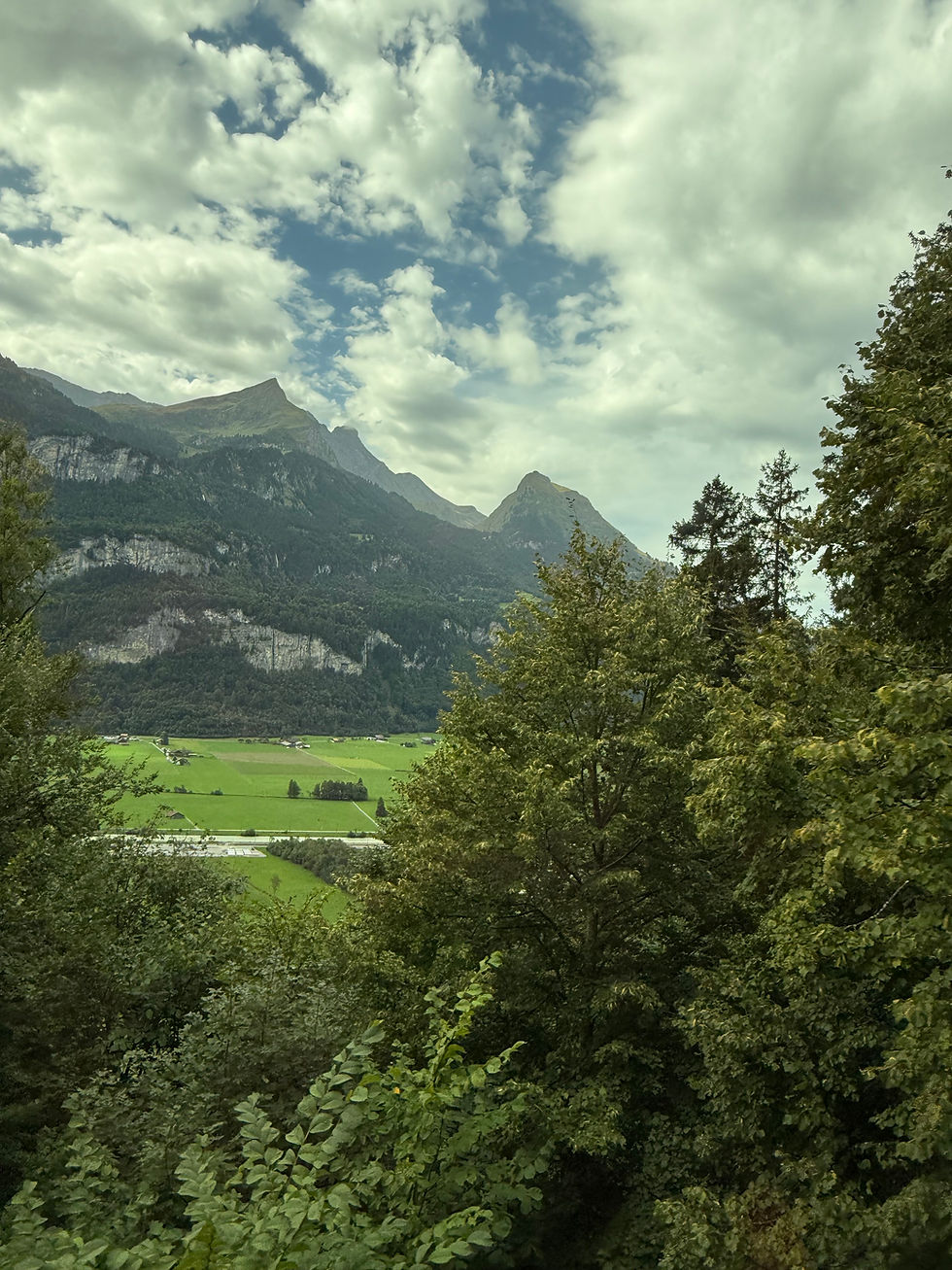
Brünig - Hasliberg is next up. I’m always tempted to stop and check out the antique store. We have reached the highest elevation here.


Now the train makes the slow and gradual descent to Lungern.

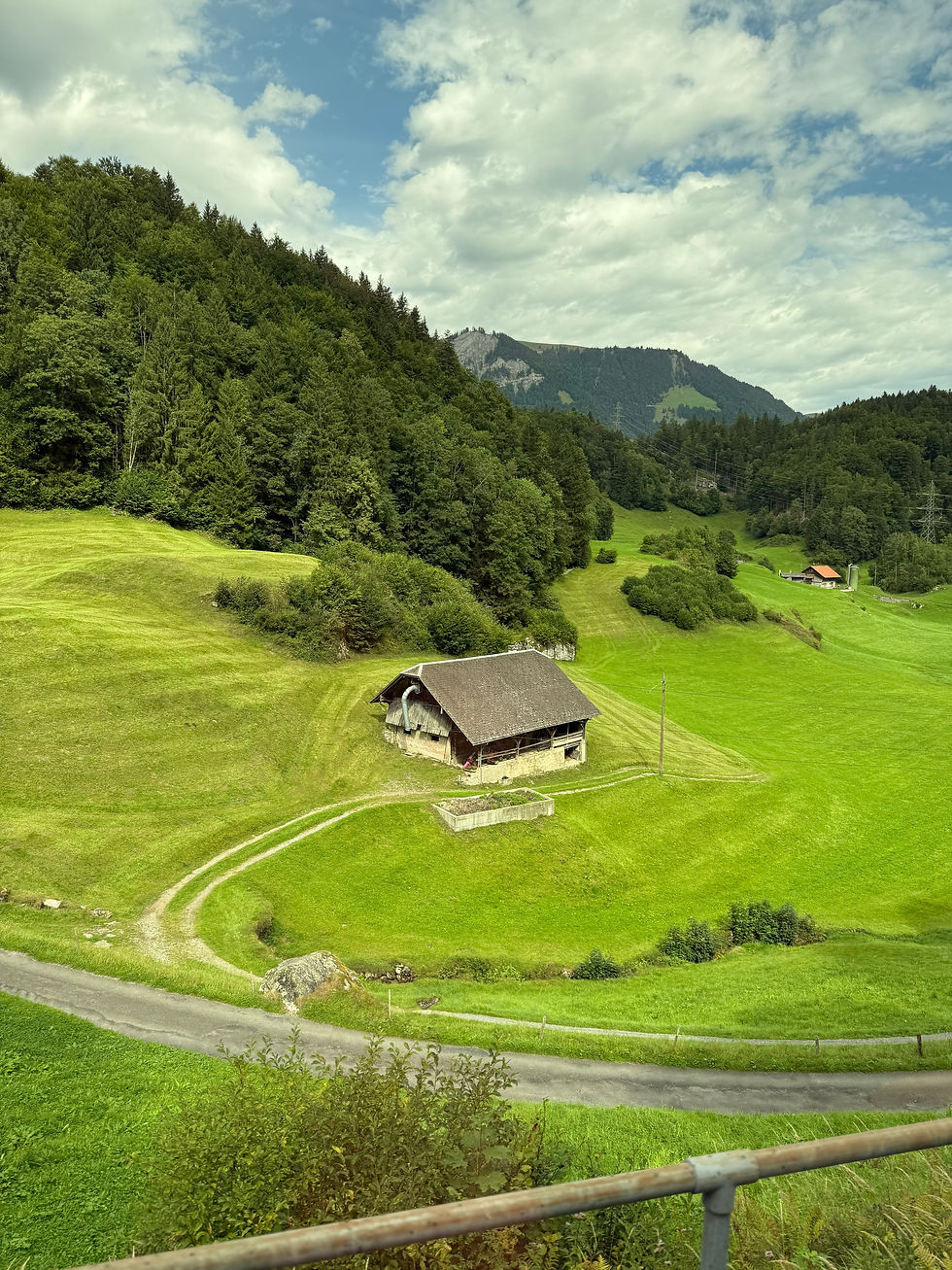


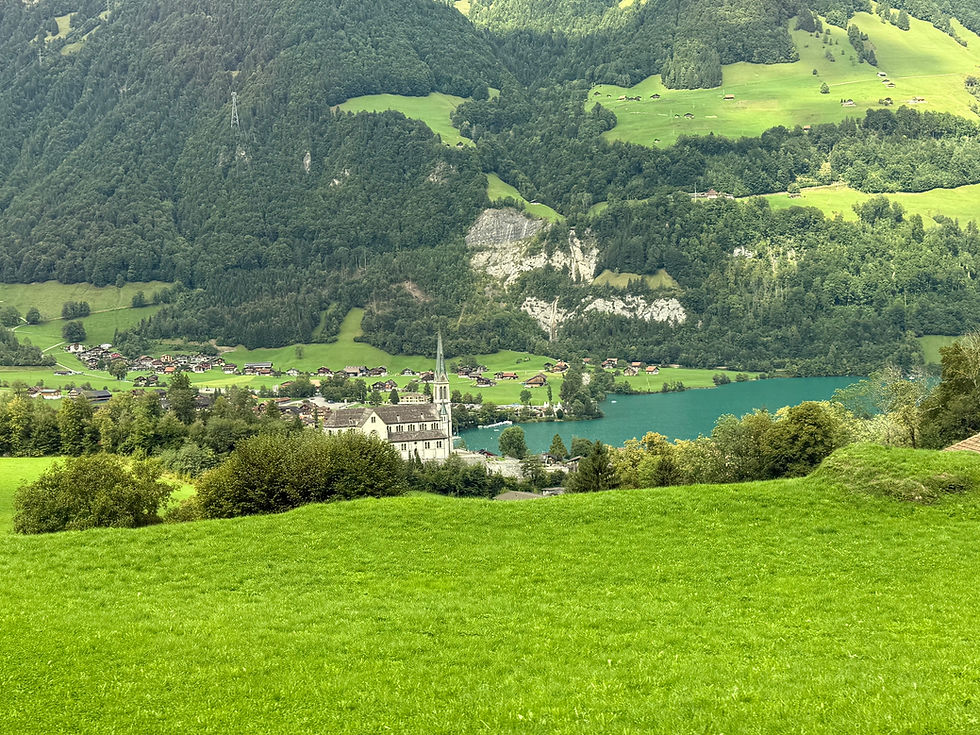
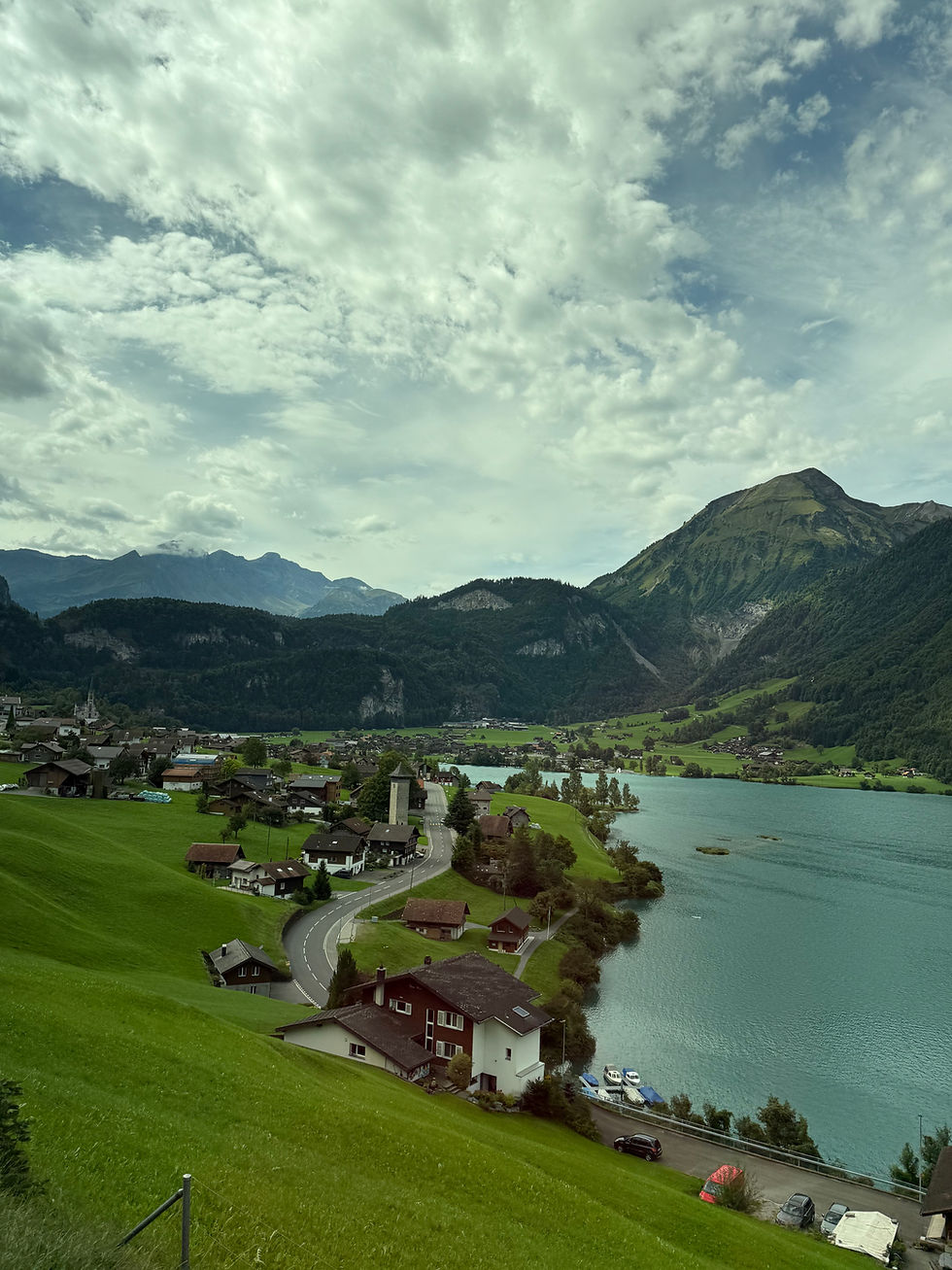

Kaiserstuhl is a favorite stop of mine. This is the location of the final scene in the Korean series "Crash Landing on You”.
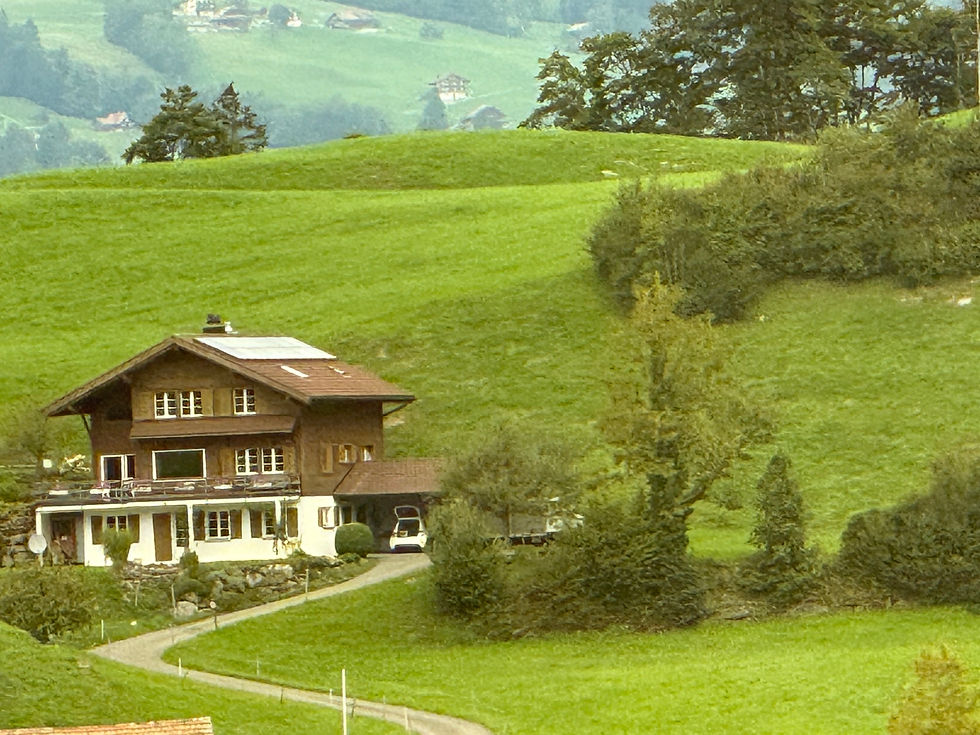

We have to pass through Giswil and Sachsein before I get to my stop in Sarnen where I will change trains to then go onto Hergiswil.



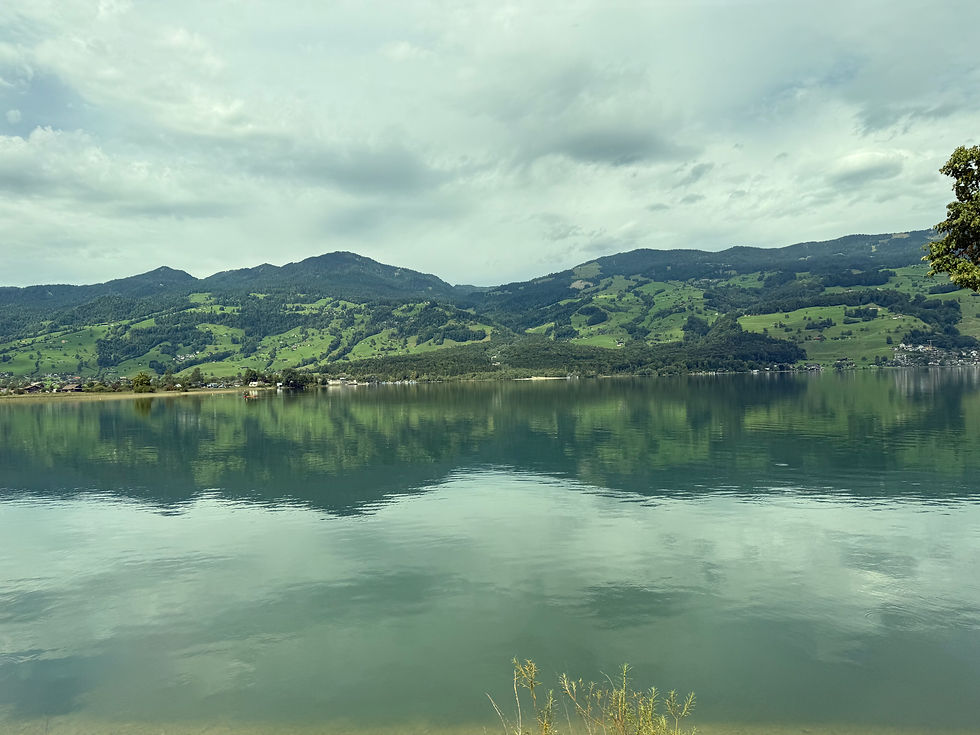
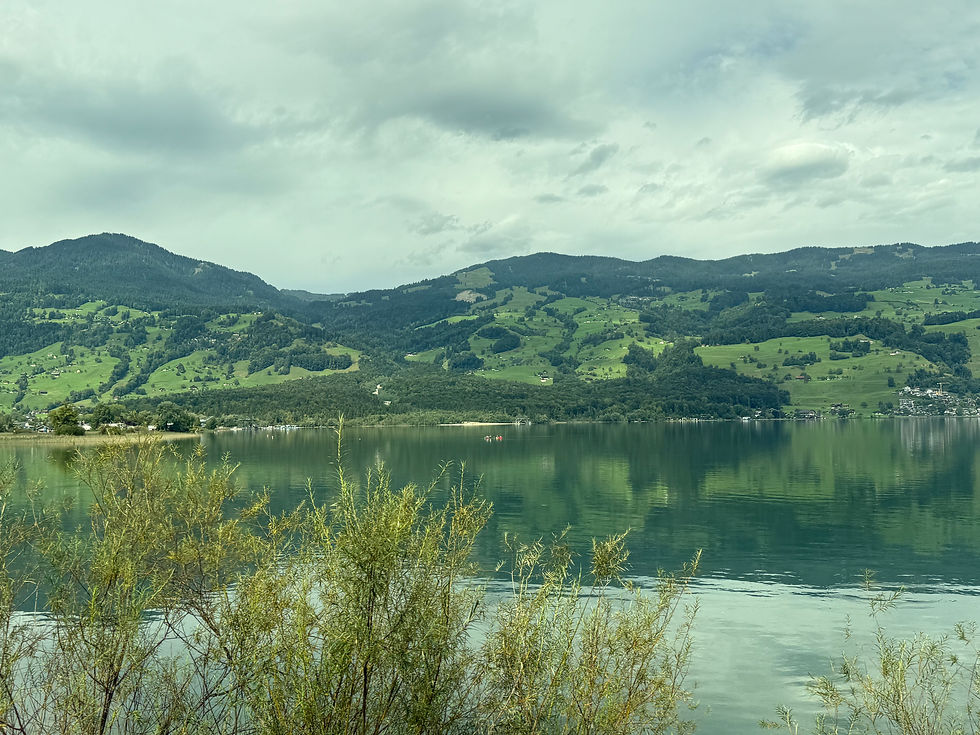
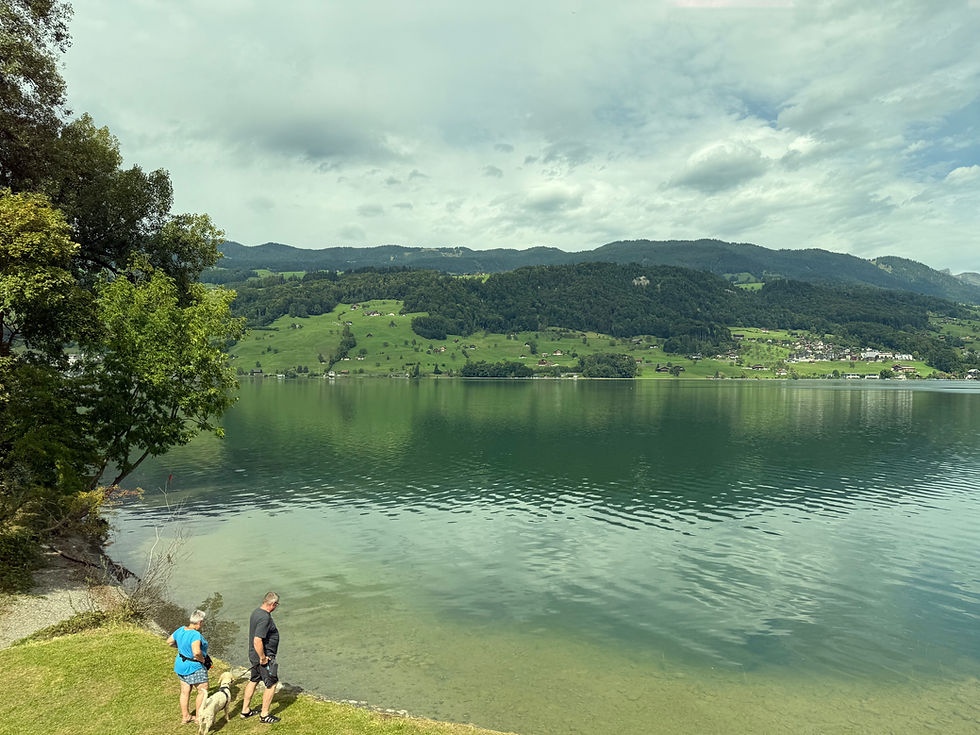
These are colorful wrappers for hay!

The Glasi Hergiswil Factory is a short walk from the train station in Hergiswil.
"The Glasi Hergiswil is a Swiss factory that manufactures glass in Nidwalden, Switzerland. It was founded by the brothers Siegwart in 1817. The Glasi was threatened to be closed because of old machines and technology. Due to the efforts of the community it remained open. It also offers visitors the opportunity to observe workers as they produce the glass. The Glasi has a museum and is home to the first glass labyrinth in Switzerland."
The Glasi Hergiswil is the only remaining glassworks in Switzerland where glass is still blown and shaped by hand.
.
The first thing I did was to go to the main shop and ask if they were shipping to the U.S. I recognized the lady and she recognized me as someone who comes in September. Unfortunately, no European country is shipping to the U.S. due to the tariffs. These tariffs are putting a crimp in my shopping. I’m not known to be a shopper but I did shop at the Woodpecker and Glasi as they would ship my purchases.
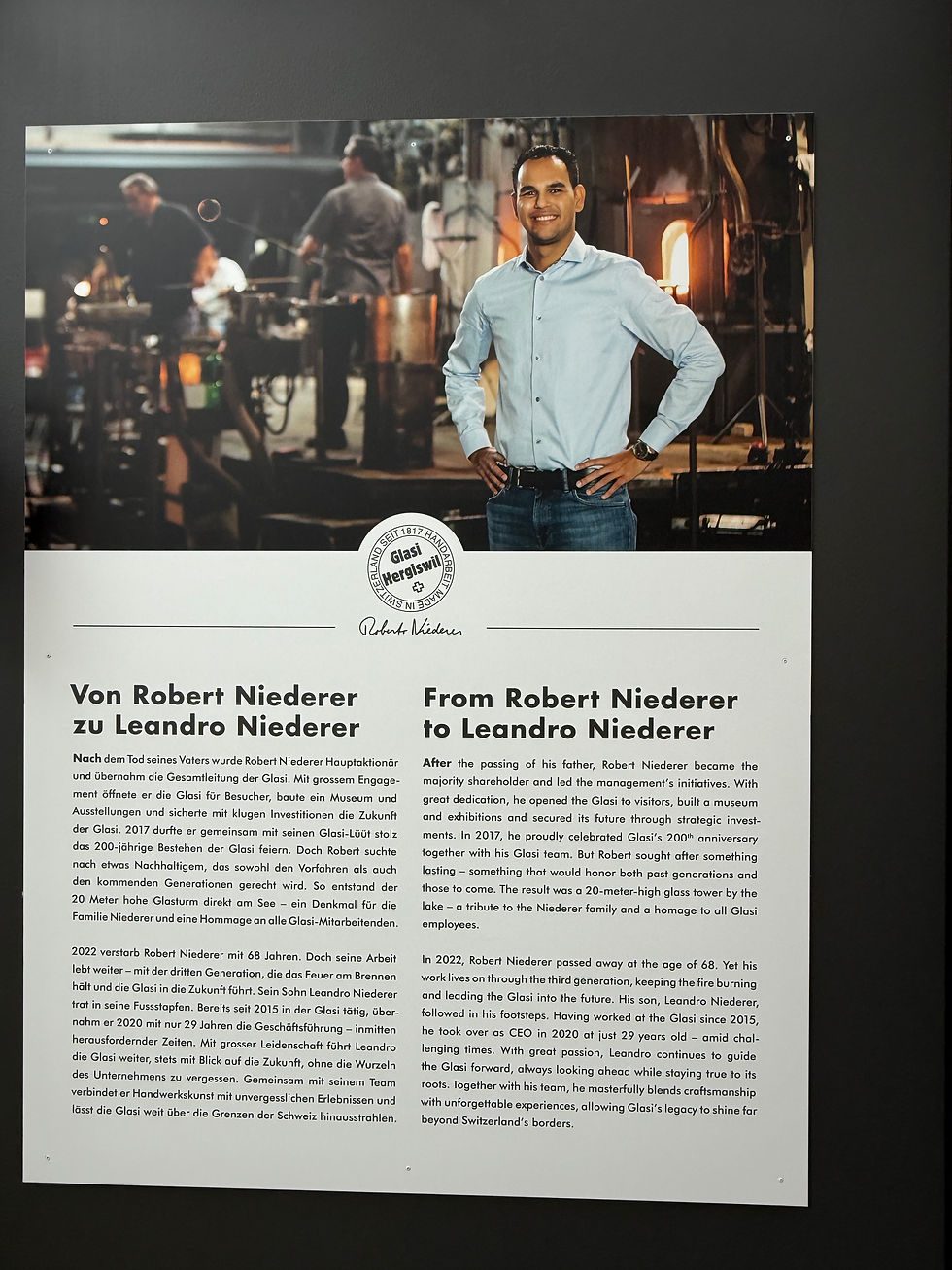

The roar of the furnaces is deafening, but it is fun to watch the artisans at work. It is a super hot room.
These two men worked as a team.

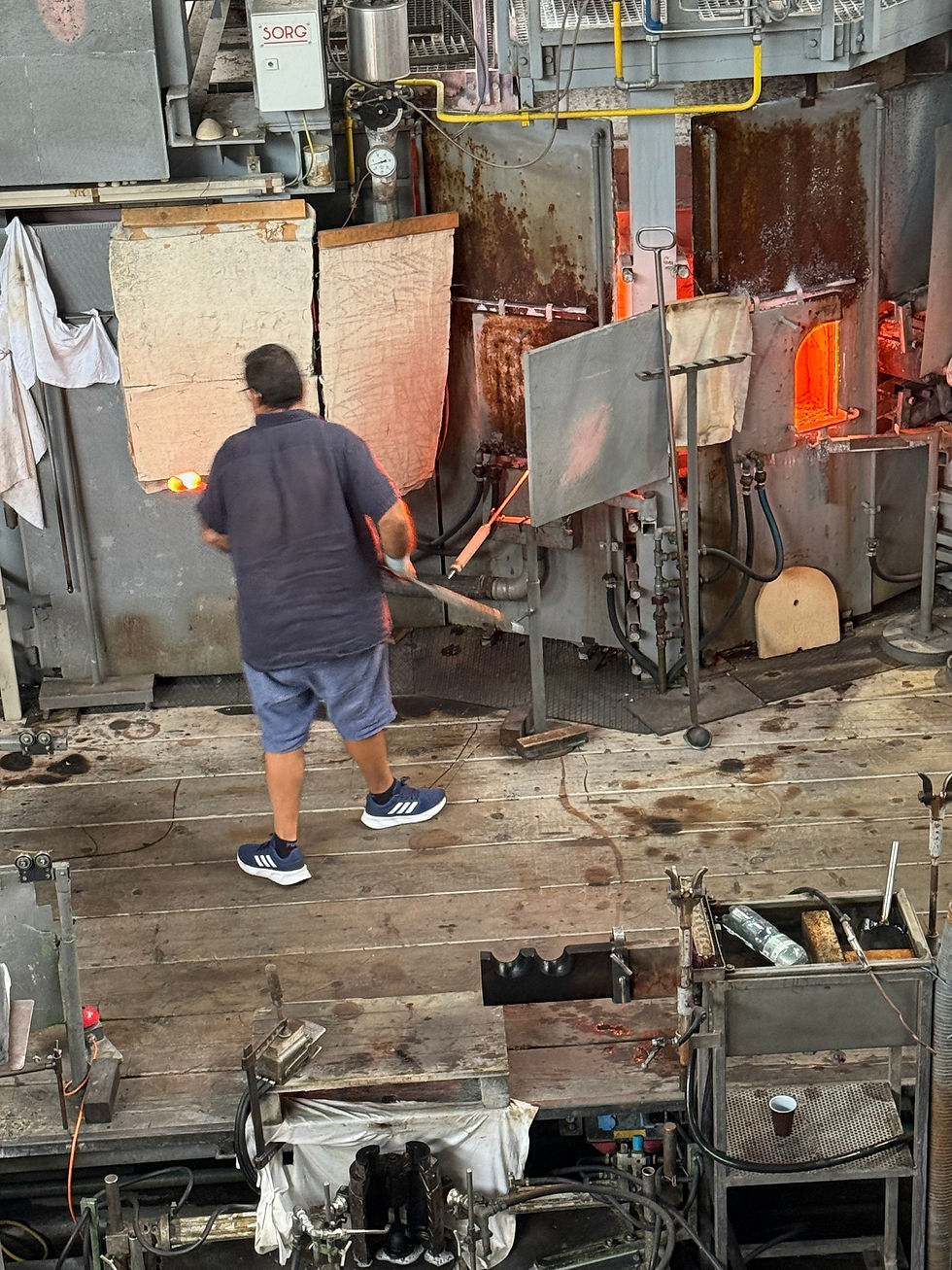


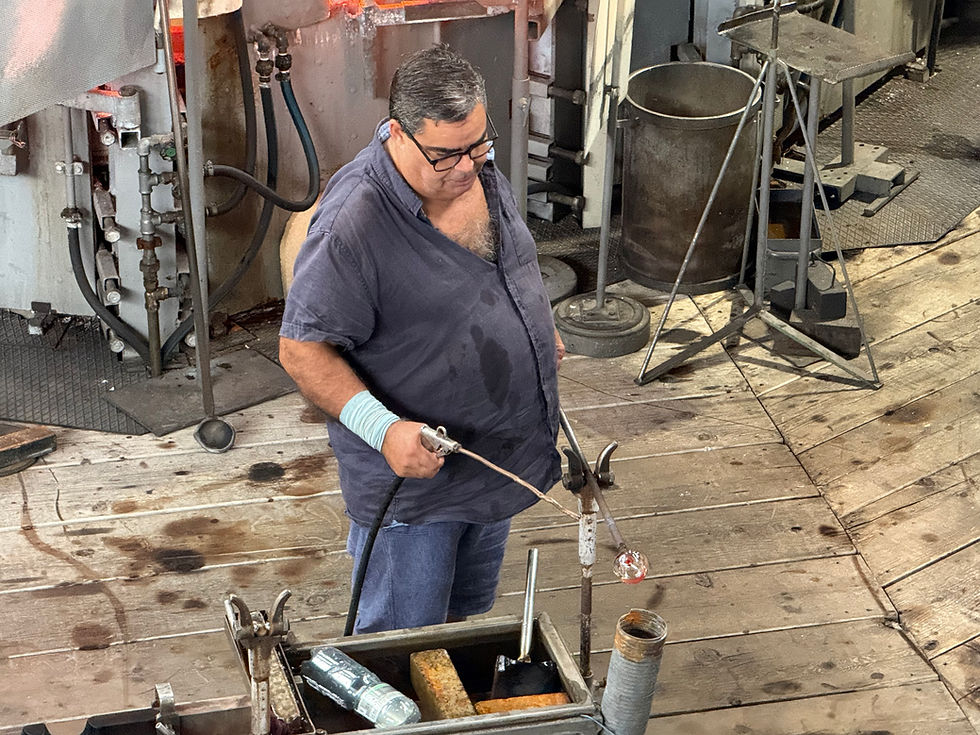

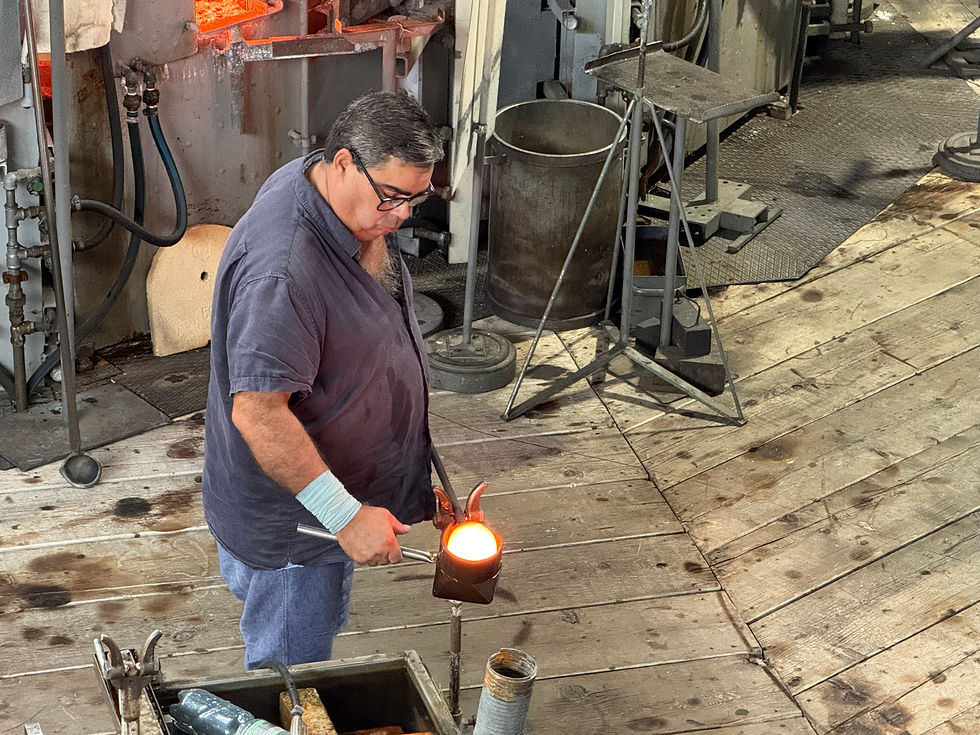
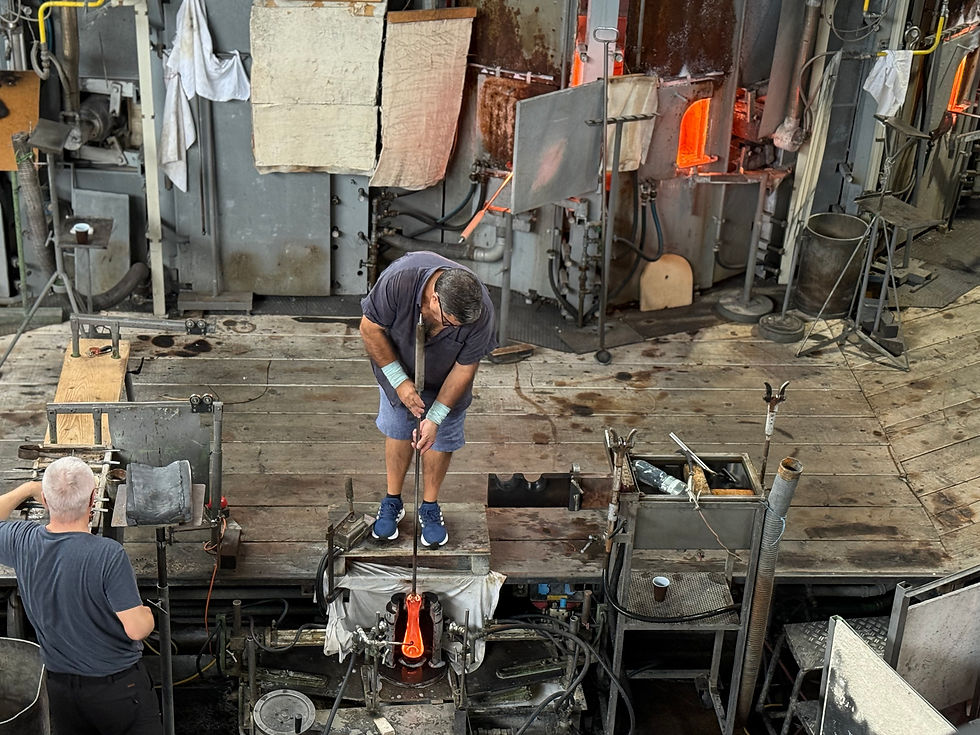
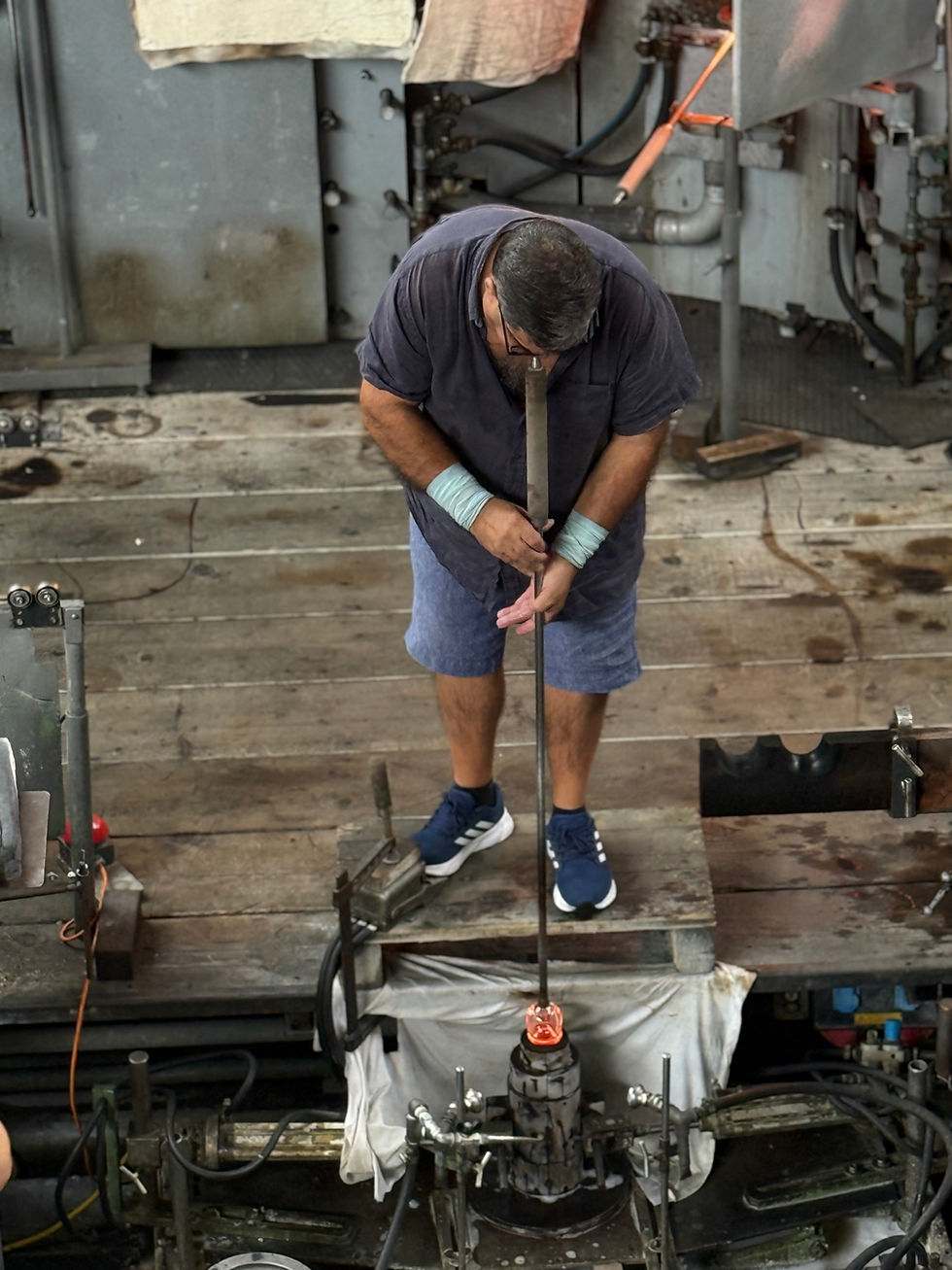
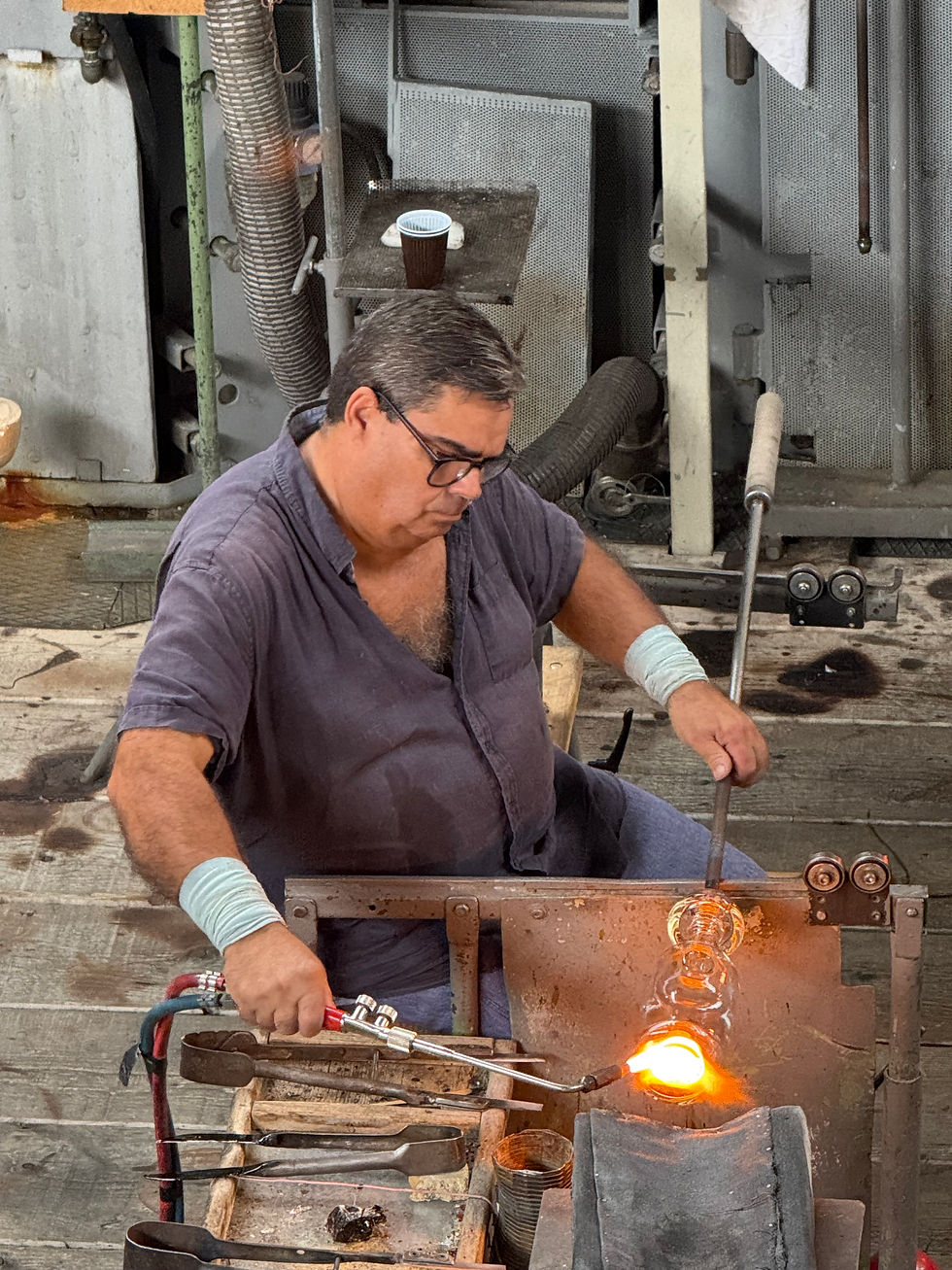
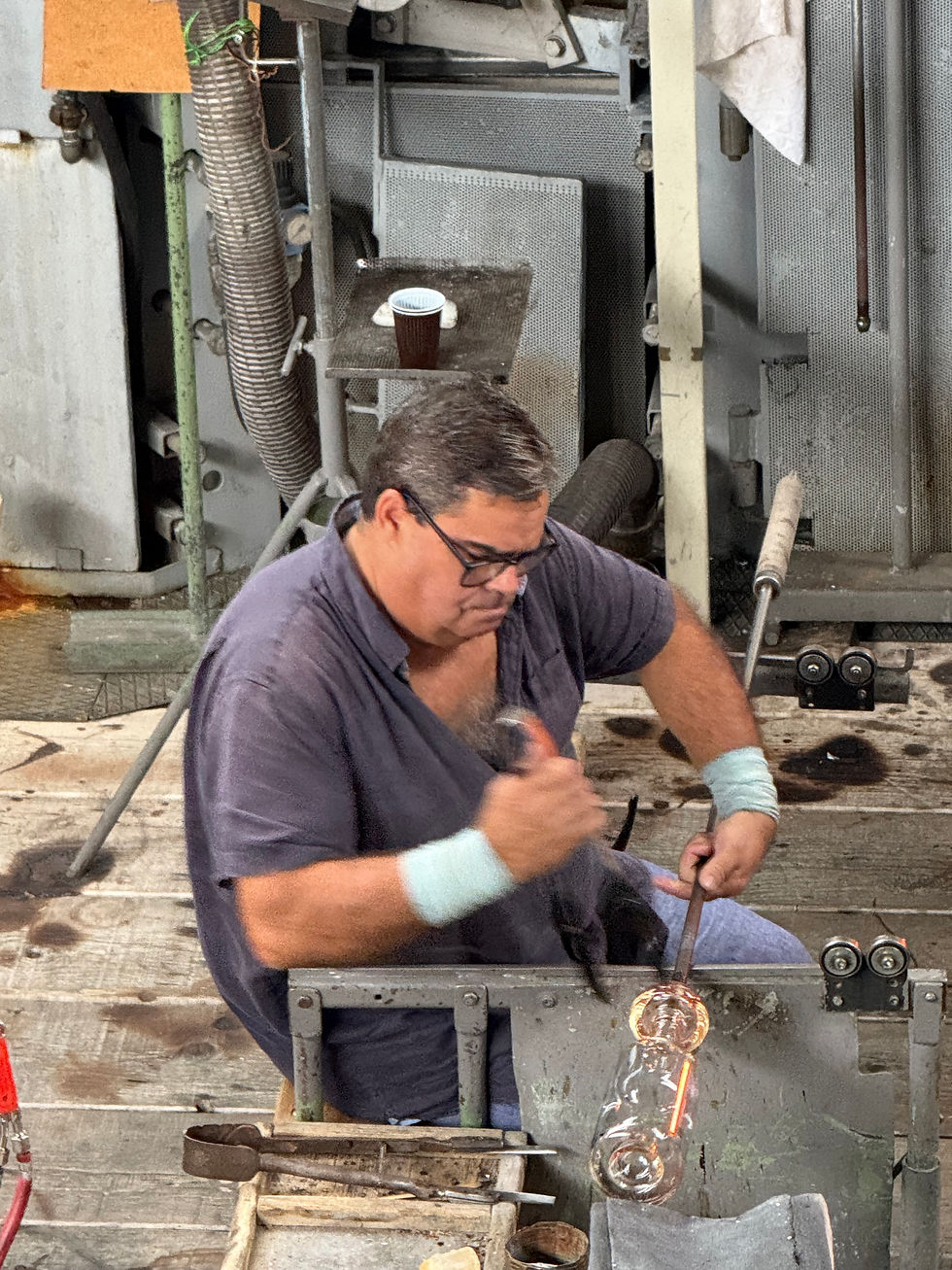

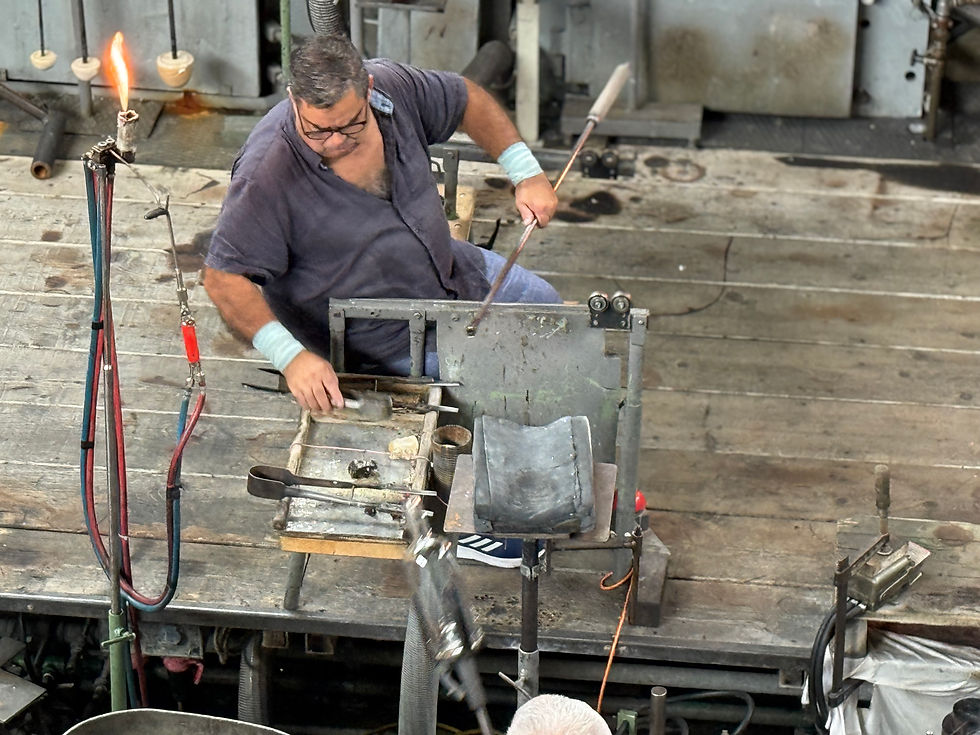







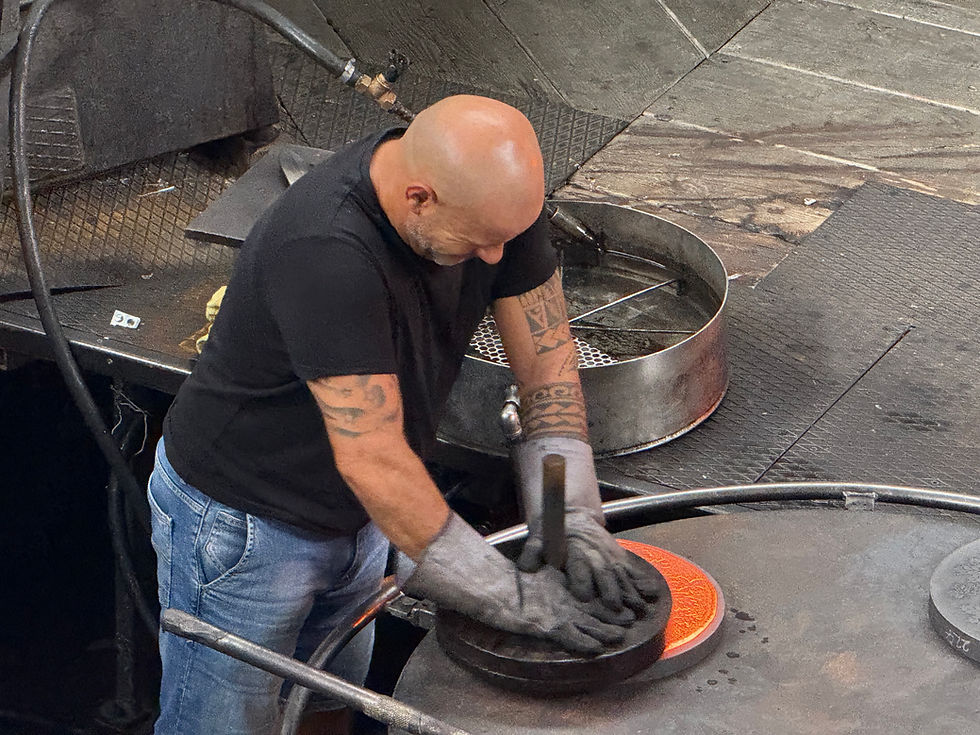


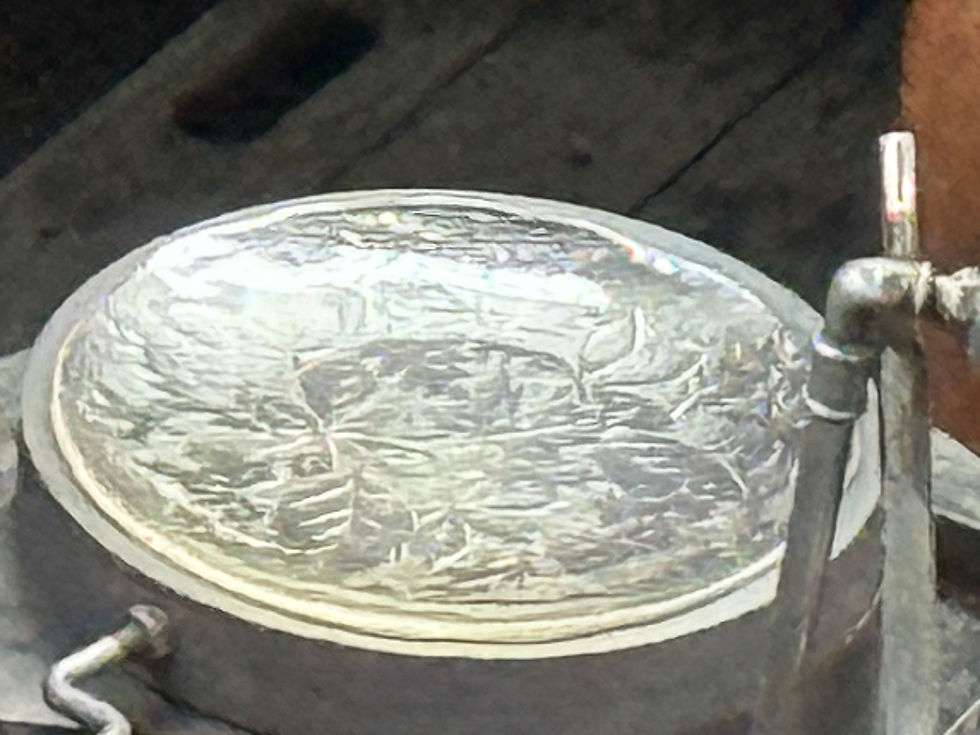

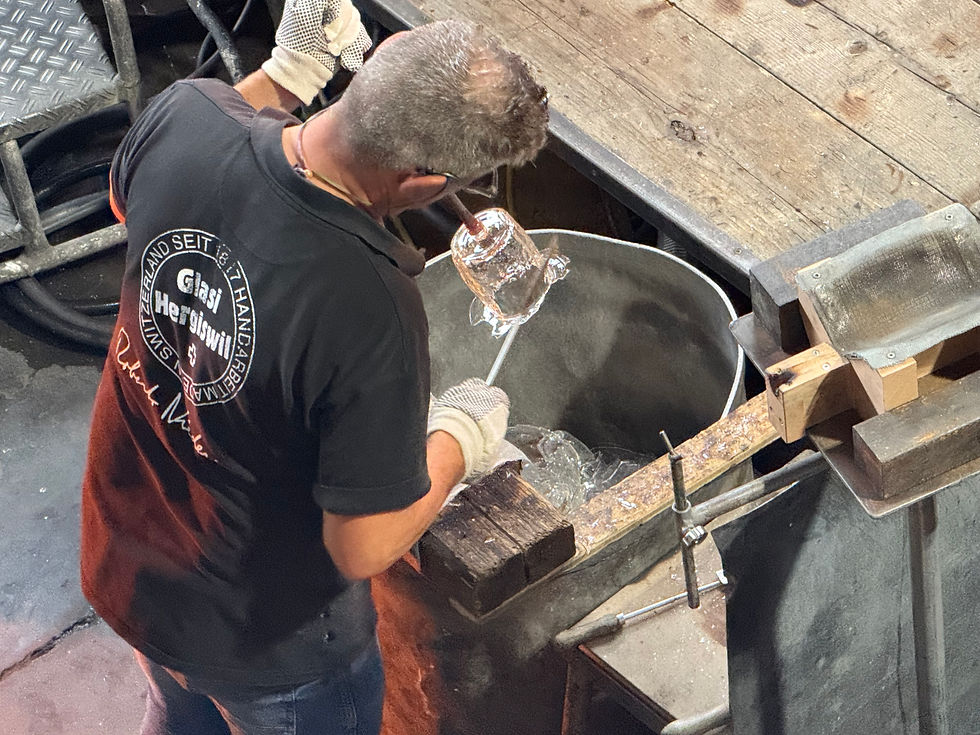


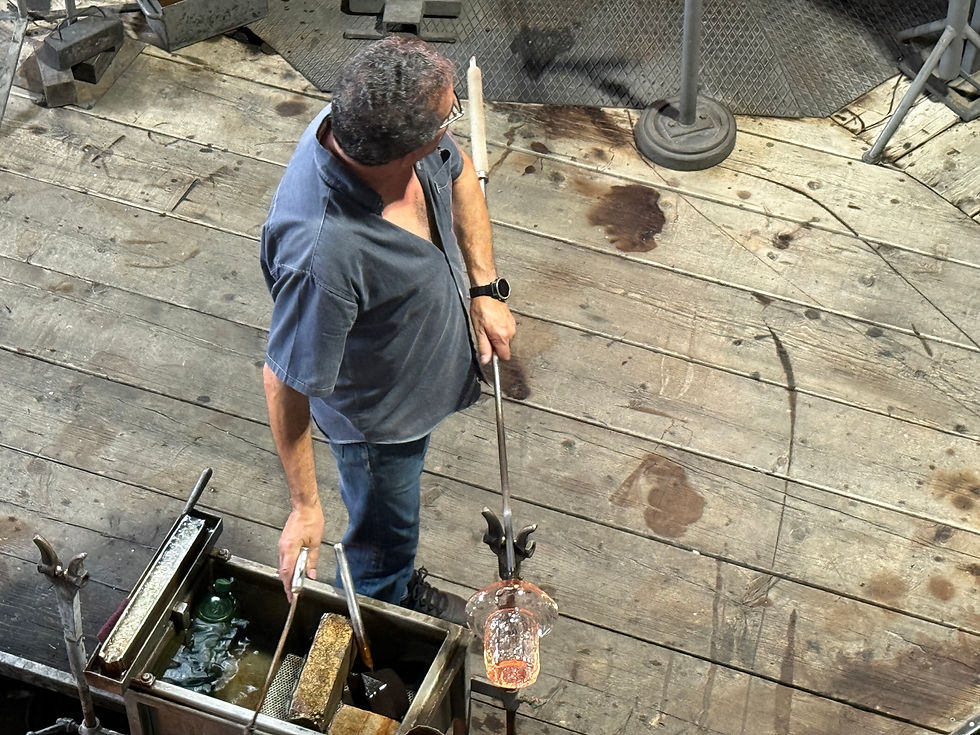

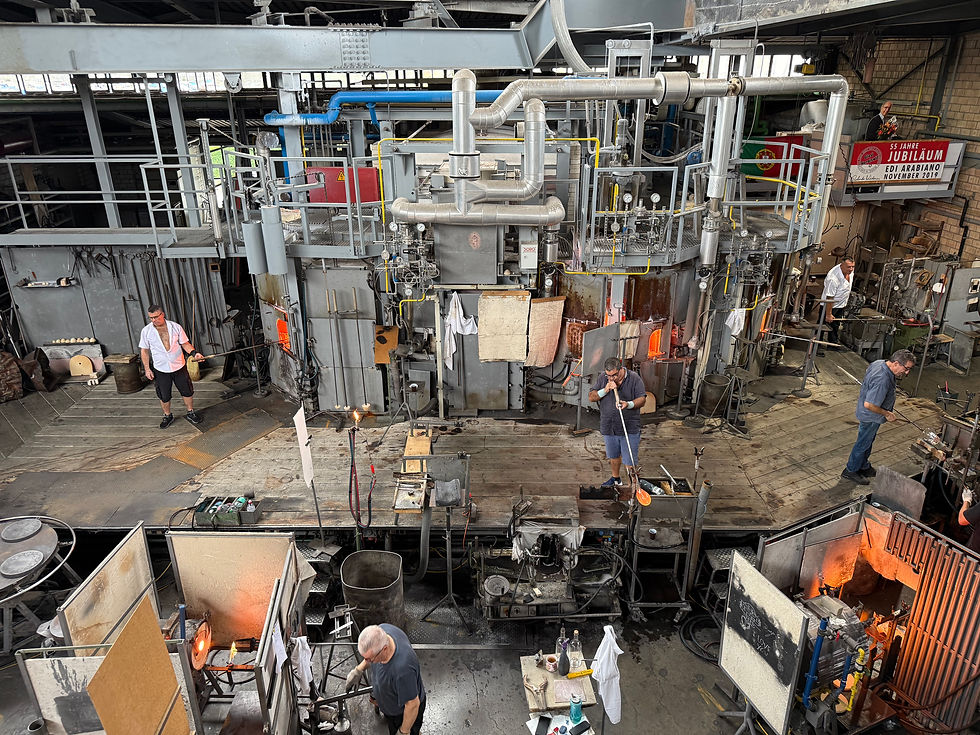

There is a small museum of glass items.
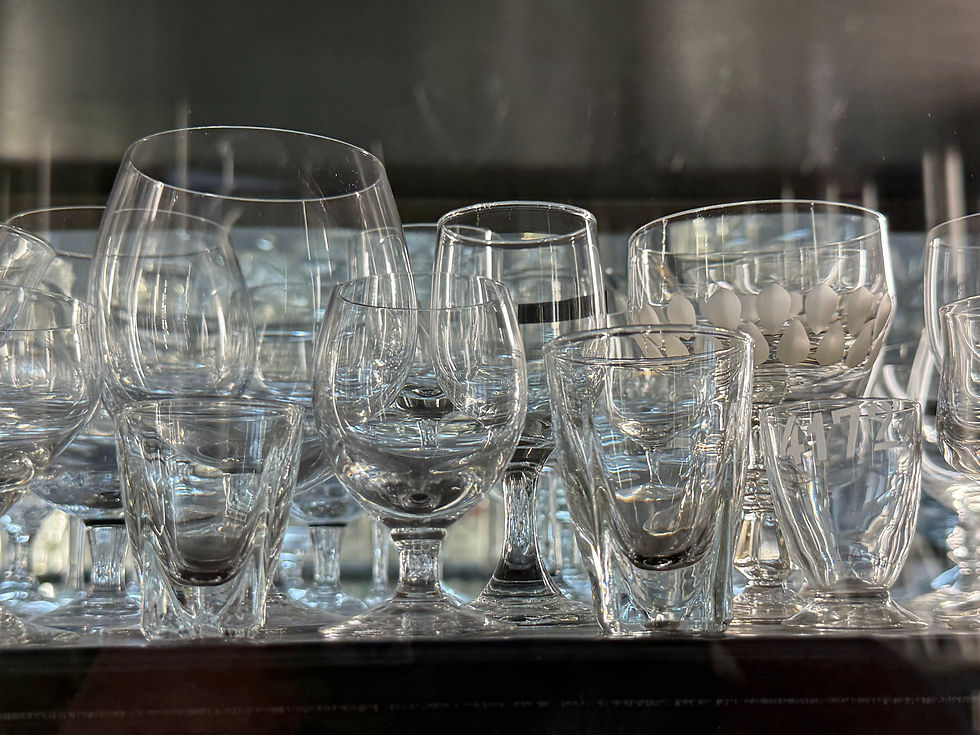



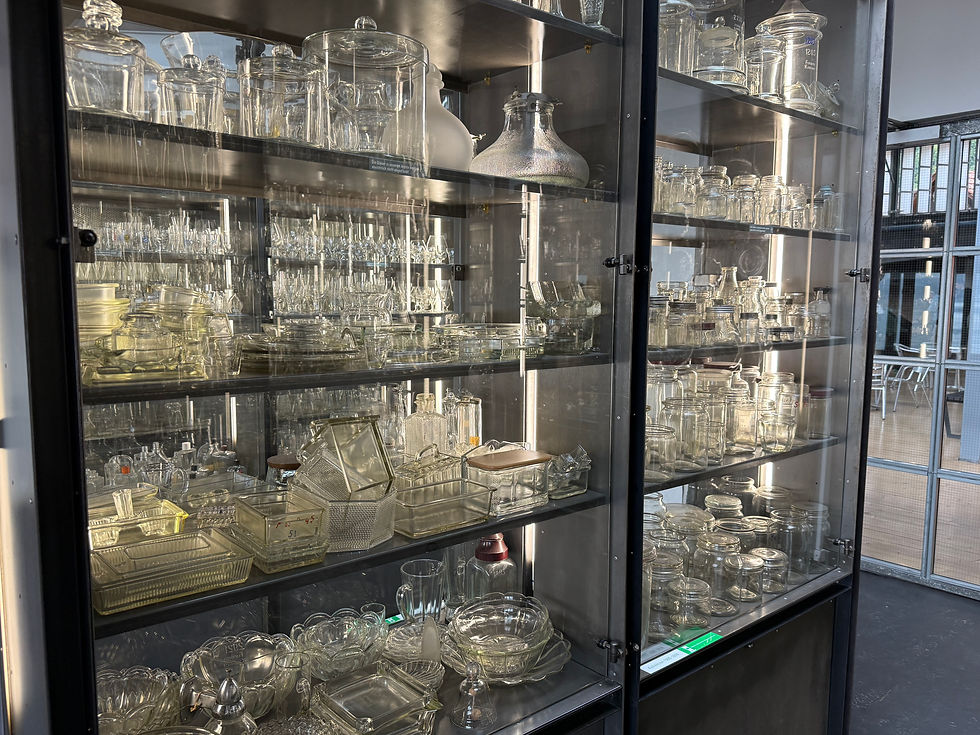


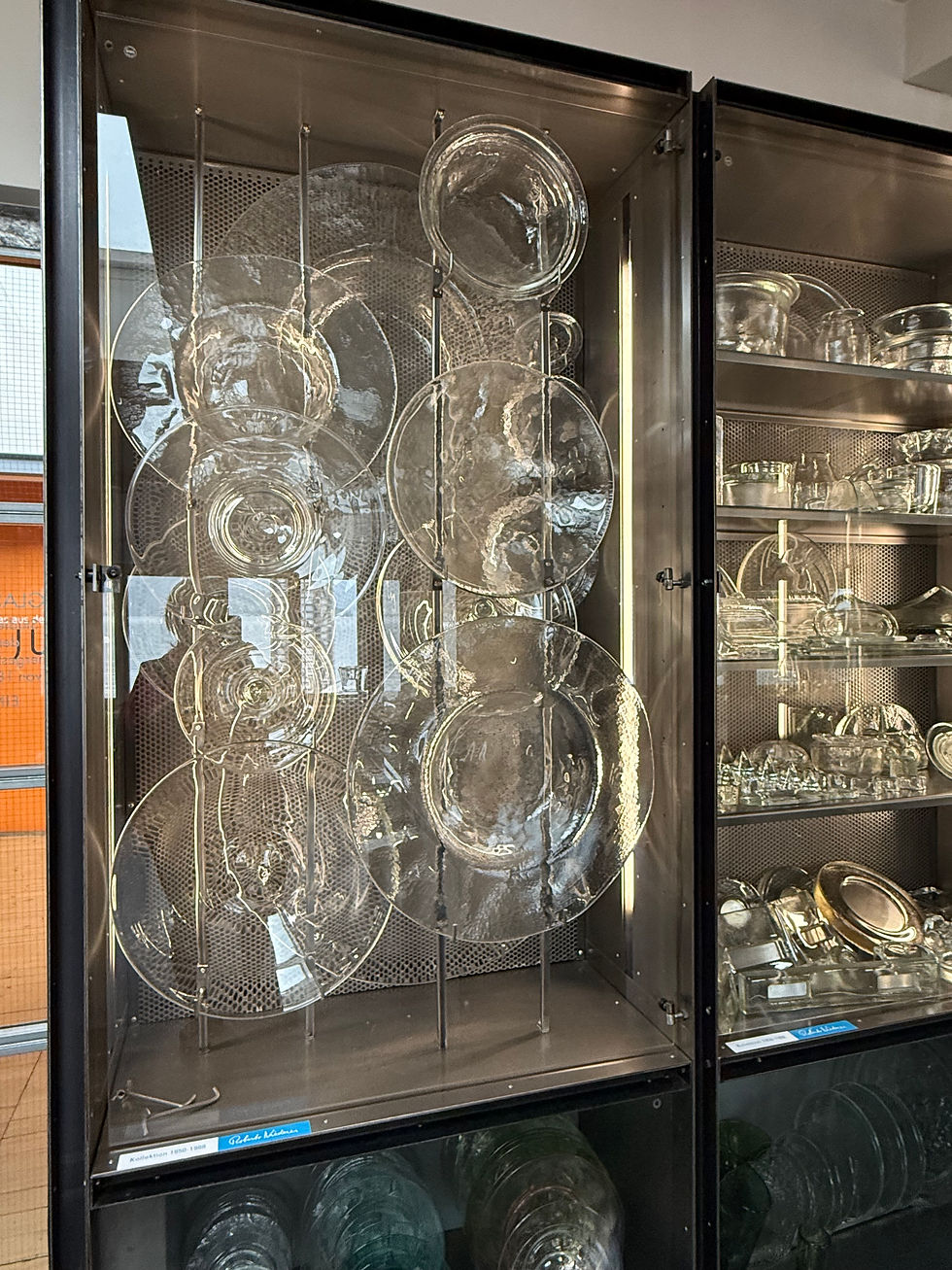

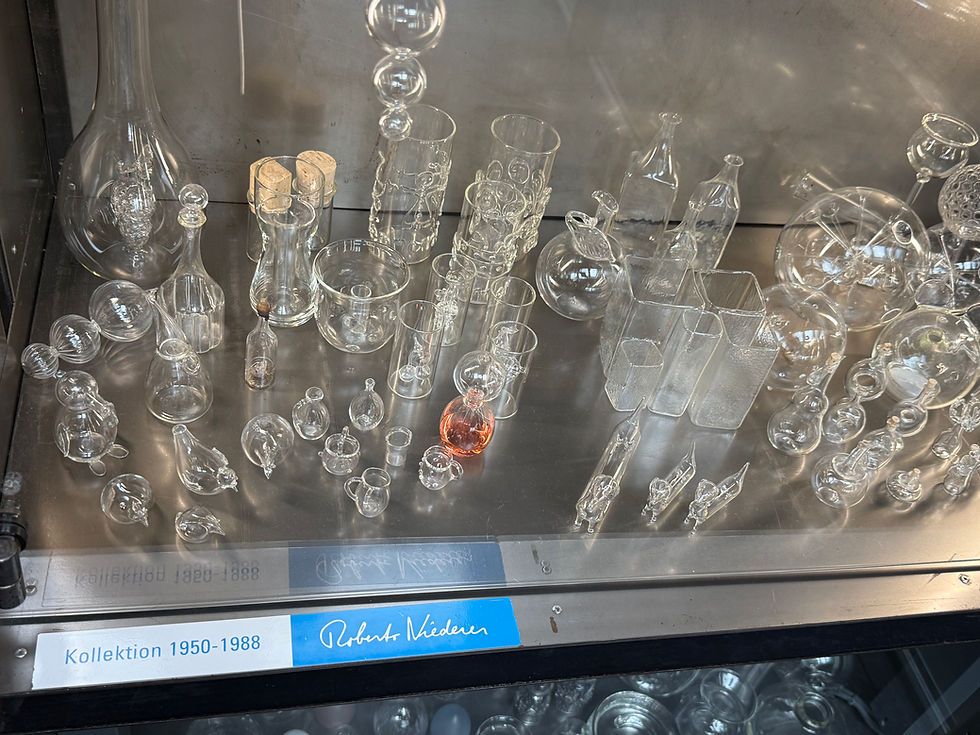
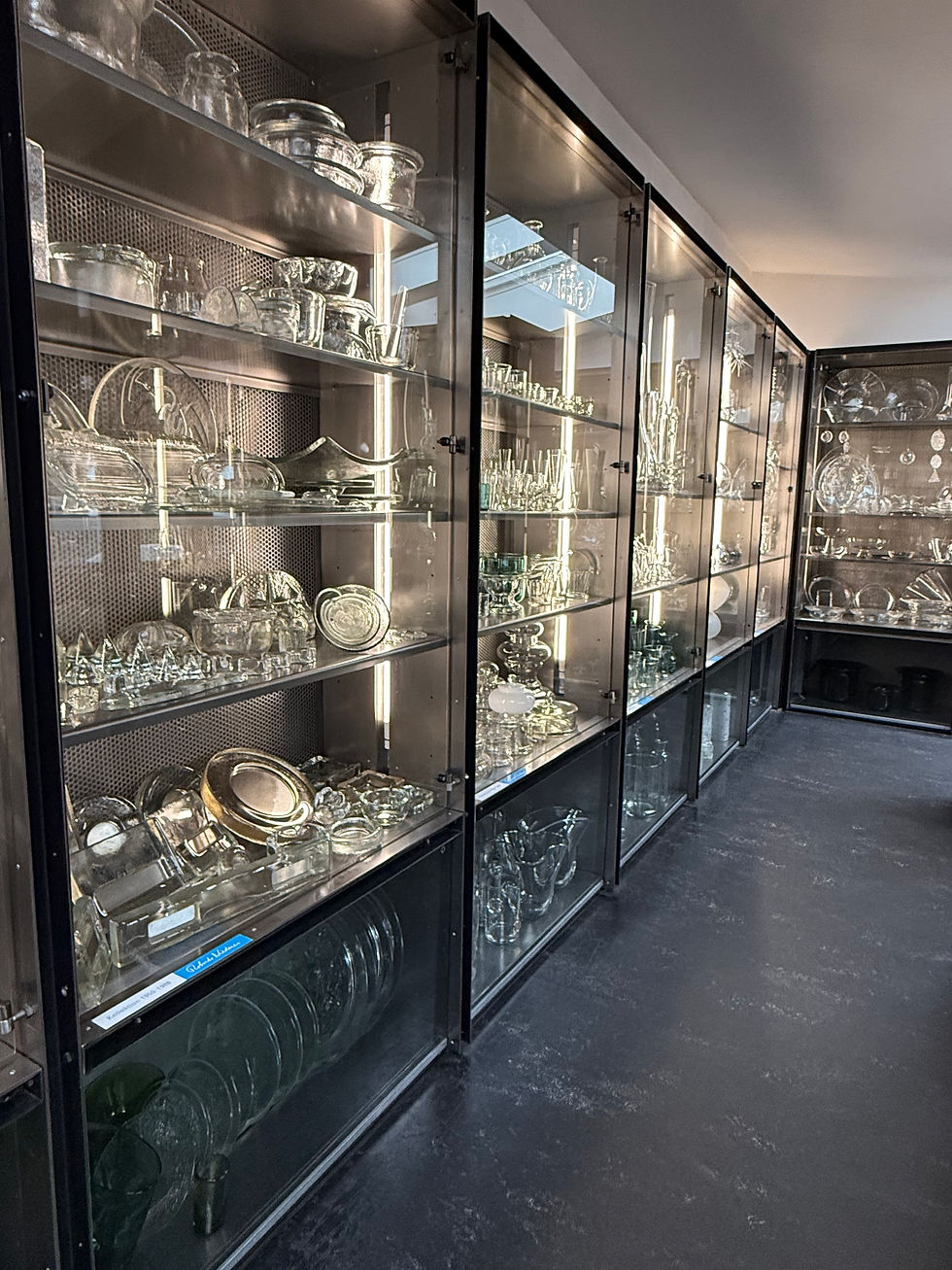
There is an interactive part of the factory where you are able to see the different uses of glass.


Wet your fingers and rub them around the rim to make different sounds.

Glass drum set.
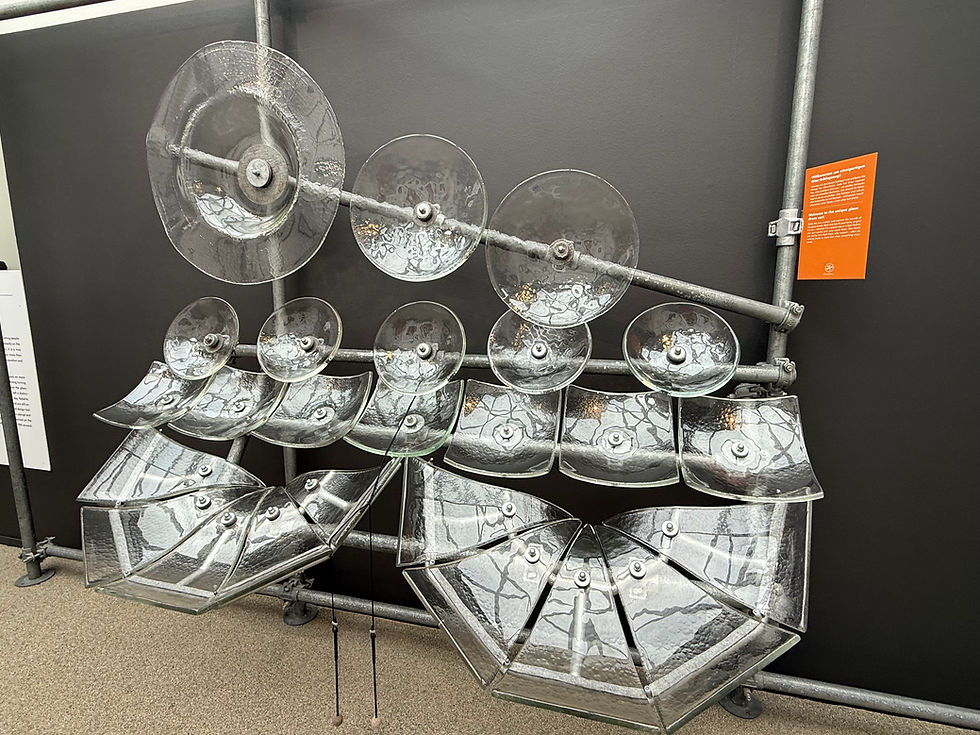
Started to sprinkle as I walked to the Hergiswil station.
There was a quick shower which stopped when I arrived in Sarnen. Waited a few minutes and caught the Luzern- Interlaken Express that will bring me back to Interlaken Ost.
These two men were cleaning at the Sarnen station by platform 2. They definitely took pride in their work, The word that comes to mind is meticulous.
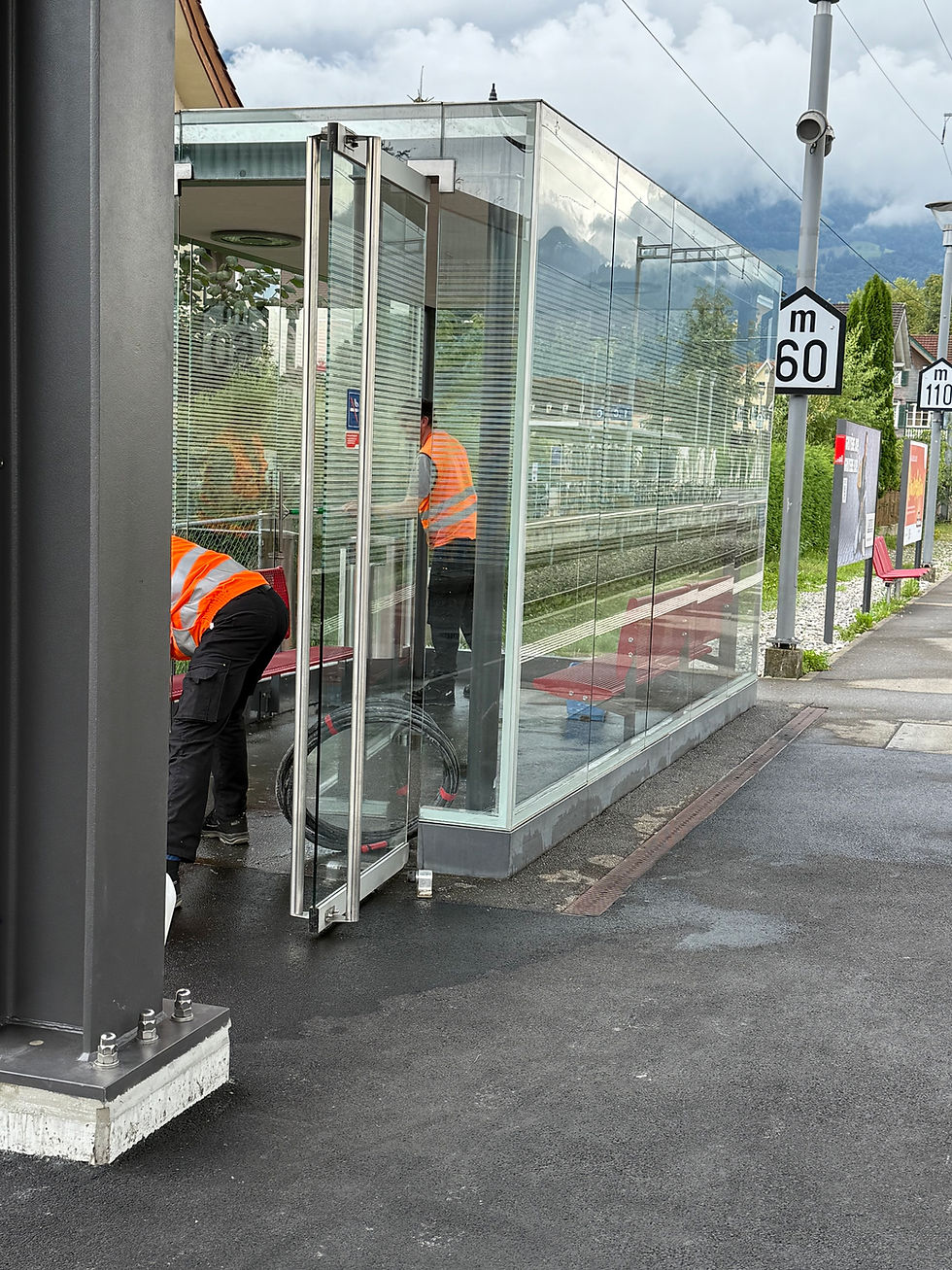
A few more sprinkles popped up when we reached Kaiserstuhl. The rain beaded off the windows quickly. Wonder what they use to let this happen.


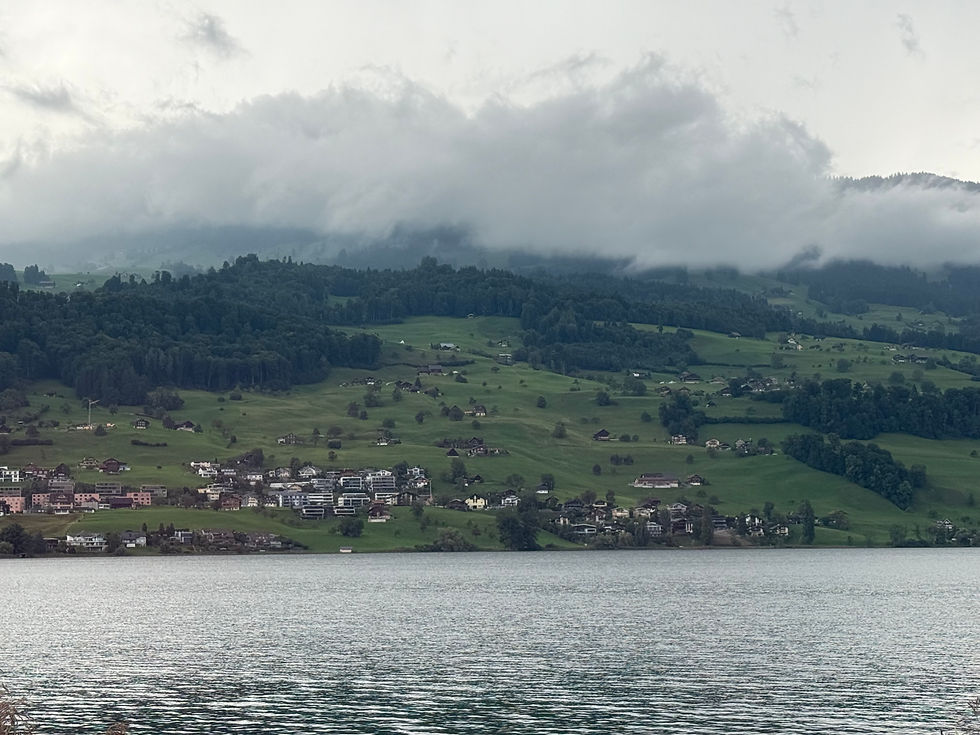




We had steak and salad for dinner and I finished up the raspberries and double cream.

Hoping the issues with the tariffs can be settled quickly. I miss shopping at the Woodpecker and at Glasi Hergiswil.




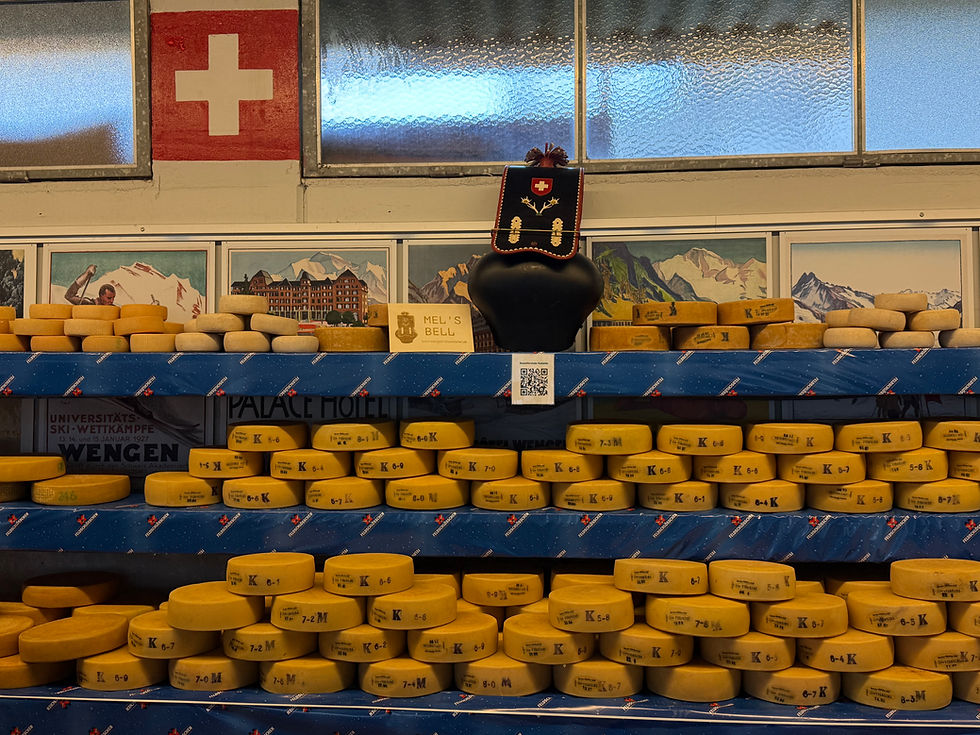
Comments